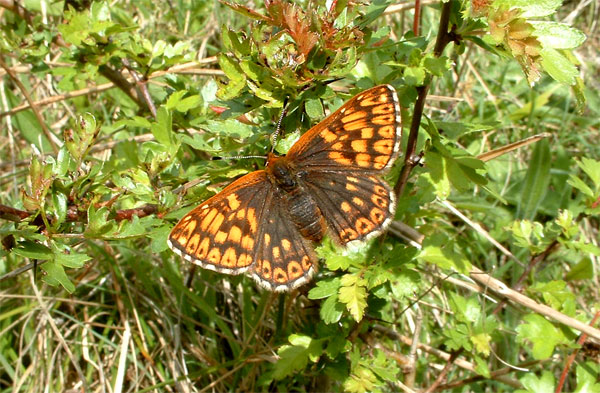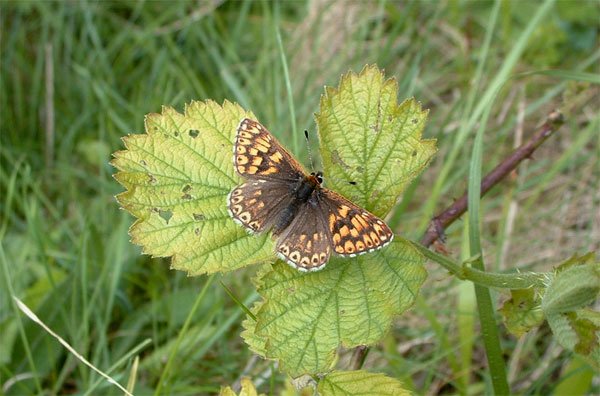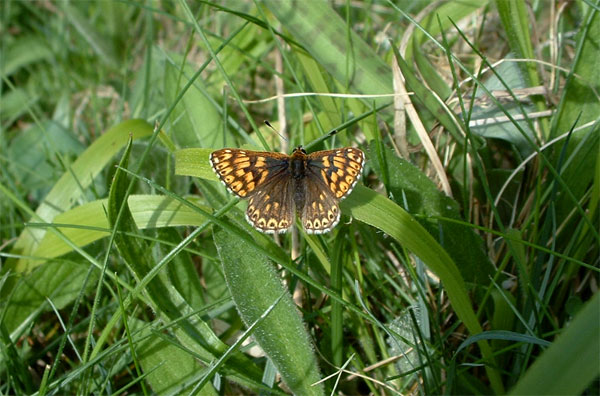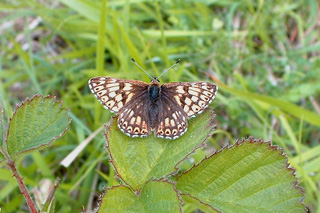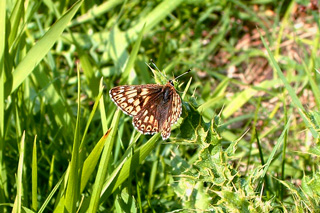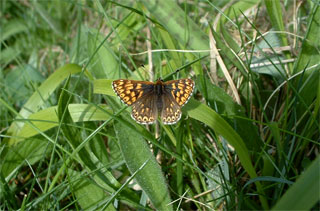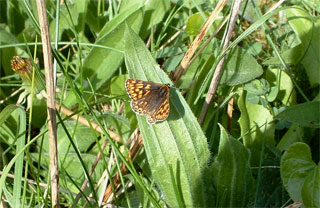Wingspan 1 1/4 (32mm) Known to be the smallest British Fritillary . In the 18th Century it was known as Mr Vernons Fritillary with its spotted wings giving it characteristic look . This small butterfly frequents scrubby grassland and sunny woodland clearings, typically in very low numbers. The adults rarely visit flowers and most sightings are of the territorial males as they perch on a prominent leaf at the edge of scrub. The females are elusive and spend much of their time resting or flying low to the ground looking for suitable egg-laying sites.
The Duke of Burgundy is found in scattered colonies across southern England, with more isolated colonies in the southern Lake District and North Yorkshire.
It has declined substantially in recent decades, especially in woodlands where it is reduced to fewer than 20 sites.
IMAGING COURTESY OF STEVE SHROUD (C)
Foodplants
The main foodplants are Cowslip (Primula veris) and Primrose (P. vulgaris). It occasionally uses the so-called 'False Oxlip', the hybrid of these two Primula species.
Habitat
Two principal habitats are used: chalk or limestone grassland, with either extensive areas of scrub or topographical shelter; or clearings on ancient woodland sites, either regenerating coppice, young plantations, sizeable glades or wide rides.In both habitats it requires foodplants growing among tussocky vegetation and on downland it prefers north- or west-facing slopes, possibly because the humid conditions encourage lusher growths of the foodplant.


